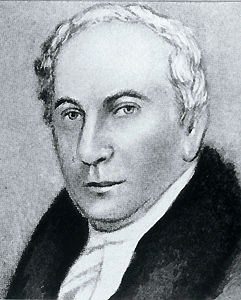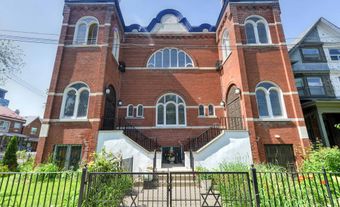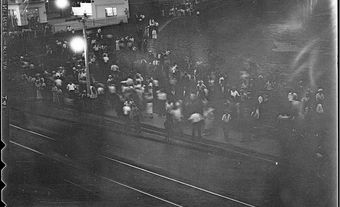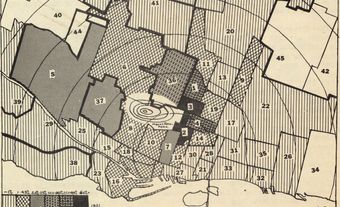Anti-Semitism is an attitude characterized by hostility and discriminatory behaviour towards Jewish people. Anti-Semitism has a long history in Canada in fueling discrimination and unfair treatment against Jewish Canadians. (See also Prejudice and Discrimination in Canada.) Anti-Semitism in Canada has rarely been restricted to the extremists of society. Rather, it has often been part of the mainstream, shared to varying degrees by all elements of the nation. Until the 1950s it had respectability; few people apologized for being anti-Jewish. Expressions of anti-Semitism were heard in the halls of Parliament, read in the press, taught in some schools and absorbed in some churches.

Early Manifestations
The earliest recorded manifestation of anti-Jewish sentiment in Canada was the expulsion in 1808 of Ezekiel Hart from the Quebec legislature, though this may have been more the result of his politics than his religion. A major exponent of anti-Semitism in the 19th century was the prominent writer and critic Goldwin Smith. A pathological anti-Semite, Smith disseminated his hatred in dozens of books, articles and letters. Jews, he charged, were “parasites,” “dangerous” to their host country, and “enemies of civilization.” His anti-Jewish tirades helped set the tone of a still unmoulded Canadian society and had a profound impact on such young Canadians as William Lyon Mackenzie King, Henri Bourassa and scores of others. Indeed, in 1905, in the most explicitly anti-Jewish speech in the history of the House of Commons, Henri Bourassa, borrowing heavily from Smith, urged Canada to keep its gates shut to Jewish immigrants.
Anti-Semitism was particularly in evidence in Quebec, where the Catholic Church associated Jews with modernism, liberalism and a host of other “dangerous” doctrines. From 1880 through to the 1940s, such Catholic journals as La Vérité, La semaine réligieuse and L’Action sociale, as well as activists such as Jules-Paul Tardivel helped spread anti-Jewish sentiment throughout the province.

The most notorious early incident of violence against Jews occurred in Quebec City in 1910. Following a particularly inflammatory address by a well-known anti-Semite, Joseph Plamondon, some of the audience attacked Jewish storekeepers and damaged their businesses. Aggrieved Jews launched a civil action against Plamondon. Four years later the courts awarded them minimal costs; but the onslaught continued.
Anti-Semitism Between the Wars
Leading the attack from the 1920s was the respected French Canadian intellectual Abbé Lionel Groulx. His savage denunciations of the Jews influenced the province's intellectual elite — including clerics, politicians, teachers and journalists. (See also Delisle-Richler Controversy.) Not only were Jews denounced in the Catholic press, but popular newspapers joined in the assault. (See also Action Nationale; Le Devoir.) Out of this was created the “Achat Chez Nous” movement, an attempt by Church and nationalist leaders to institute a boycott of all Jewish businesses in the province, thus forcing Jews to leave. As well, since Catholic and Protestant clergies viewed Quebec as a Christian society, Jews were barred for years from various school boards. Though these anti-Semitic campaigns were concerted and forceful, at the time Jews only made-up 1 per cent of Quebec's population.
Anti-Semitism was not limited to one province. It existed — indeed thrived — elsewhere in Canada. In English Canada, organizations such as the Social Credit Party, the Orange Order and the Native Sons of Canada were rife with anti-Jewish sentiment. In 1933, one of the worst eruptions of ethnic and anti-Semitic violence in Canadian history occurred in Toronto with the Christie Pits riot. The riot was sparked by displays of swastikas to provoke the Jewish community.
For Canadian Jews in the 1920s and 1930s, quotas and restrictions were a way of life. Many industries did not hire Jews; educational institutions such as universities and professional schools discriminated against them. Jewish doctors could not get hospital appointments. There were no Jewish judges, and Jewish lawyers were excluded from most firms. There were scarcely any Jewish teachers. (See also Jewish School Question.) Jewish nurses, engineers and architects had to hide their identity to find jobs in their fields.
Restrictive covenants on properties often prevented them from being sold to Jews. As well, many clubs, resorts and beaches were barred to Jews. Signs warning “No Jews or Dogs Allowed” or “Christians Only!” could be found on Halifax golf courses and outside hotels in the Laurentians. The same was true for the cottage areas in Ontario, the lake country of Manitoba and the vacation lands of British Columbia.
Worst of all, for Jews desperate to get out of Nazi-controlled parts of Europe, anti-Semitism also existed in the upper levels of the Canadian federal government. Prime Minister William Lyon Mackenzie King worried that Jewish immigration would “pollute” Canada's bloodstream, even as his government was ensuring that no more would come. One particularly bad case was that of the Jewish refugees aboard the ship MS St. Louis. They were denied entry because of discriminatory immigration policies and had to sail back to Europe where many later died because of the Holocaust. In a remark that has since become infamous, a senior Canadian official ― believed by some to have been King ― was asked how many Jews Canada was prepared to accept in the circumstances and responded: “None is too many.” (See also None is Too Many.) It is thus no surprise that Canada had by far the worst record of any Western or immigration country in providing sanctuary to the Jews of Europe in the 1930s and 1940s. (See also Canada and the Holocaust.)
Present Day
Since the Second World War, anti-Semitism has generally been on the decline in Canada. New ideas — and leaders — replaced the old order; attitudes, old habits and traditions were slowly transformed. The creation of the state of Israel in 1948 initially changed stereotypes about Jews, and overt anti-Semitism was reduced. In the House of Commons, there was still an occasional outburst from Social Credit members, and from a tiny handful of Parliamentarians from Quebec. However, for the most part, vocal attacks against Jews have diminished.
By the 1970s and 1980s most barriers for Jews had been removed. Human rights commissions, the Canadian Charter of Rights and Freedoms, and scores of statutes and judicial decisions guaranteed that the discrimination once so rampant in Canada against Jews — and others — would never reappear. Jews were now playing an increasingly crucial role in all sectors of Canadian society — in politics, law, medicine, arts and business.
However, anti-Semitism is still present in Canada. This is highlighted by anti-Jewish hate crimes like vandalism and by the activities of some right-wing Holocaust-denial groups. (See also Canada and the Holocaust.) In 2020, there were 312 police-reported hate crimes against Jewish people.
Geopolitical issues between Israel and Palestine also heighten community tensions. Jewish Canadians experienced a sudden rise in anti-Semitic acts following the 7 October 2023 attacks on Israel by Hamas, a Palestinian terrorist group, and the subsequent Israeli military operation in Gaza, a Palestinian territory. For example, in November of that year, Jewish schools in Montreal were targeted by shootings. Other community institutions were hit by fire bombs.

 Share on Facebook
Share on Facebook Share on X
Share on X Share by Email
Share by Email Share on Google Classroom
Share on Google Classroom





